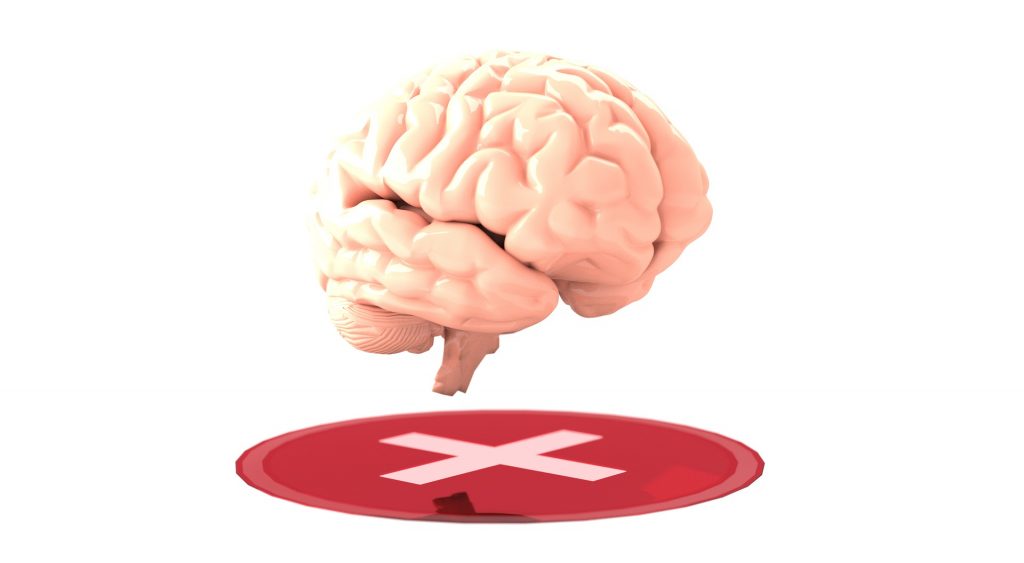Psychiatric disorder could be a mental state that greatly disturbs your thinking, moods, behavior and seriously will increase your risk of disability, pain, death or loss of freedom. The burden of mental disorders continues to grow with important impact on health and major social, human rights and economic consequences in altogether countries of the globe. Mental disorders square measure usually characterized by combination of abnormal thoughts, perception, emotions, behavior and relationships with others. Many people have mental state issues from time to time. But a mental health concern becomes a mental illness when ongoing signs and symptoms cause frequent stress and effective ability to function. Sometimes symptoms of Mental state disorder seem as physical issues like abdomen pain, back pain, headaches or other and explain aches and pains.
Mental illness can begin at any age, from childhood through later adult year, but most cases begin earlier in life. Mental disorders include- depression, bipolar affective disorder, schizophrenia and other psychotic disorders, dementia, intellectual disabilities and developmental disorders including autism. These disorders have pattern of behavioral or psychological symptoms that impact multiple areas of life. The etiology of psychiatric disorder is multifactorial with combination of biological, psychological and social causes.
Different type of mental illness offer different experiences and symptoms which may vary from person to person, even when they share the same diagnosis. Here are some major categories of psychiatric illness-
1 . Anxiety Disorder
Anxiety disorder are form of mental illness that cause people to experience distressing and frequent bouts of fear and apprehension. Occasional anxiety is an expected part of life. But anxiety disorders are group of mental illnesses and the distress they cause can keep you from carry on with your life normally. Anxiety disorder involve over temporary worry or worry. For someone with an associate in nursing disturbance, the anxiety does not get away and might aggravate over time. The symptoms will interfere with daily activities like job performance, faculty work and relationships. There square measure many kinds of disturbances, including- generalized anxiety disorder, panic disorder and various phobia related disorders. However, all anxiety disorders have one thing in common- persistent, excessive fear or worry in situation that are not threatening. People usually expertise one or additional of the subsequent symptoms-
- Feeling of apprehension or dread
- Feeling tense or jumpy
- Restlessness or irritability
- Anticipating the worst and being watchful for signs of danger
- Sweating, tremors and twitches
- Headaches, fatigue and insomnia
- Pounding or racing heart with shortness of breath
- Generalized anxiety disorder (GAD)
Generalized anxiety disorder produces chronic, exaggerated worrying about everyday life. People with GAD show excessive anxiety or worry, most days for at least six months, about a number of things such as personal health, work, social interactions and everyday routine life circumstances.
2. Panic Disorder
 People with panic anxiety have repeated surprising panic attacks. Attacks can occur unexpectedly or can be brought on by a trigger such as feared object or situations. During panic attacks people can experience- heart palpitations, a pounding heart beat or an accelerated heart rate, sweating, trembling, feelings of out of control, choking or smothering.
People with panic anxiety have repeated surprising panic attacks. Attacks can occur unexpectedly or can be brought on by a trigger such as feared object or situations. During panic attacks people can experience- heart palpitations, a pounding heart beat or an accelerated heart rate, sweating, trembling, feelings of out of control, choking or smothering.
3. Social anxiety disorder
This disorder cause intense fear about social interaction. People with this disorder me not take part in conversation, discussions or offer their ideas and make get isolated. They worry that action or behavior associated with their anxiety will be negatively evaluated by others, leading them to feel embarrassed. So, they usually avoid social situation.
4. Phobias
People with this disorder have an intense fear of or feel intense anxiety about specific objects or situations, places, events. Most people with specific phobia as have several things that can trigger those reaction. Depending on the sort and variety of triggers, attempts to control fear can take over a person’s life.
5. Mood disorder
Mood disorder is a condition of emotional state or condition where mood is distorted or inconsistent with your circumstances and interfere with your ability to function. You may feel extremely sad, irritable or empty (depressed) are you may have periods of depression alternating with your being excessively happy (mania). These are normal fluctuation in mood that come and go. Though many different sub types are recognized, three major state of mood disorders exist- depressive, Maniac and bipolar.
6. Depressive
 Depressive disorder is characterized by feelings of negativity, feeling of apathy, generalized discontent, loss of interest in things that used to be pleasurable, mood swings for overall sadness. People may also have suicidal thoughts, insomnia and may get socially isolated. Depression often affects your weight- you may lose weight or feel overly hungry and put on an excessive weight.
Depressive disorder is characterized by feelings of negativity, feeling of apathy, generalized discontent, loss of interest in things that used to be pleasurable, mood swings for overall sadness. People may also have suicidal thoughts, insomnia and may get socially isolated. Depression often affects your weight- you may lose weight or feel overly hungry and put on an excessive weight.
7. Maniac
Maniac is exactly opposite of depression and is characterized by usually high energy. Feelings of euphoria is commonly present. Symptoms include- excessive talking, less sleep the normal, distractibility, poor judgement, impulsivity.
8. Bipolar disorder
Bipolar disorder is a psychiatric disorder characterized by extreme mood shifts. It consists of extremely elevated mood and also include episodes of depression. Bipolar disorder is also known as maniac depression. Depression caused by bipolar disorder last at least two weeks. A maniac episode can last for several days or weeks. While experiencing mania, a person may feel and emotional high. Although it’s not area condition, bipolar disorder can be hard to diagnose because of its varied symptoms.
9. Schizophrenia
 Schizophrenia could be a a serious mental disorder that affects however someone thinks, feels and behaves. People with schizophrenic psychosis could seem like they lost bit with reality. It is usually seen between 16 to 30 years of an age. Schizophrenic patient main show symptoms like-
Schizophrenia could be a a serious mental disorder that affects however someone thinks, feels and behaves. People with schizophrenic psychosis could seem like they lost bit with reality. It is usually seen between 16 to 30 years of an age. Schizophrenic patient main show symptoms like-
- Hallucinations
- Delusion
- Thought disorders
- Movement disorders
- Flat affect (decrease expressive of emotion)
- Reduced feelings of pleasure in everyday life
- Difficulty beginning and sustaining activities
- Decrease speaking
- Trouble in focusing are paying attention
Symptoms can vary in type and severity overtime, with periods of worsening and remission of symptoms. Suicidal thoughts and behavior square measure common among folks with schizophrenic psychosis. There is no exact known etiology of schizophrenia, it is a combination of genetics, brain chemistry and environment. If left untreated, it can lead too complicated situations like- self harm, suicide, obsessive compulsive disorder, depression, social isolation, being victimized. There is no way to prevent schizophrenia, but sticking with the treatment plan can help prevent relapses or worsening of symptoms.
10. Dementia
Dementia is state of decline in mental ability severe enough to interfere with daily life. Alzheimer’s disease accounts for almost 60 to 80% of the cases. Vascular dementedness, which occurs after a stroke is the second most common type of dementia. Symptoms of dementedness will vary greatly, at least two of the following core mental functions must be significantly impaired to be considered dementia-
- Memory
- Communication and language
- Ability to focus and pay attention
- Judgement
- Visual perception
Many dimensions are progressive. Possible symptoms of dementia may include- recent memory loss, difficulty in completing familial task, disorientation, problems with abstract thinking, miss placing things, mood changes. If symptoms of dementia are due to a reversible, non degenerative cause, however, treatment may be possible to prevent or halt for the brain tissue damage.
11. Alcohol misuse and dependence
Alcohol abuse occurs when someone drinks too much and too often at one time. It starts to negatively impact your life, ruining relationships and interfering with work performance and your social life. Some people don’t stop drinking and they become addicted to alcohol. This is when alcohol abuse leads to dependence. This state is also known as alcohol use disorder (AUD). There area unit several signs that somebody could have alcohol use disorder. The following signs are the warning signs of alcohol dependency-
- An uncontrollable urge to drink
- Negative thought on limiting of alcohol
- Drinking in risky situations
- Alcohol serves as your escape from feelings
- You hurt people or become violent when you drink
- Experiencing withdrawal symptoms after you stop drinking for too long like- shakiness nausea, trouble sleeping or seizures.
- Priority of drinking over other activities
- Tolerance of effects of alcohol
- Subjective compulsion to drink
Alcohol misuse may emerge during the patient’s history, although patients may minimize their intake. It may also present via its effect on one or more aspects of the patient’s life. Alcohol dependence commonly present withdrawal in those admitted to hospital as they can no longer maintain their high alcohol intake in this setting.
 Drinking problems can sneak up on you, it is important to be aware of the warning signs of the alcohol abuse and alcoholism and take steps to cut back if you recognize them.
Drinking problems can sneak up on you, it is important to be aware of the warning signs of the alcohol abuse and alcoholism and take steps to cut back if you recognize them.
12. Eating disorder
Eating disorder area unit health problems within which the individual expertise severe disturbances in their consumption behavior and connected thoughts and emotions. There are two well defined eating disorders- anorexia nervosa and bulimia nervosa, they share some overlapping features. People with anorexia nervosa and bulimia nervosa tend to be perfectionist with low self esteem and are extremely critical of themselves and their bodies.
13. Anorexia nervosa
People with anorexia nervosa have mark weight loss, arising from avoidance of food, open in combination with binging, purging, excessive exercise. Body images profoundly disturb so that, despite emaciation, patient still feel overweight and are terrified of weight gain. They usually feel fat and sometimes even despite life-threatening semi starvation. Symptoms includes- dramatic weight loss, refuses to eat food, makes frequent comment about feeling overweight despite weight loss, post puberty female loses menstrual periods, lethargic.
14. Bulimia nervosa
Is a life threatening eating disorder where overeating is more like a compulsion. Bulimia nervosa characterized by frequent episodes of binge eating followed by extreme efforts to avoid weight gain by using laxative, diuretics, vomiting and excessive exercise. This cycle of continuous eating and losing weight by using the above mentioned techniques severely effects body and emotional well being. People with bulimia nervosa conceal binge eating, unable to stop eating and it usually large amounts of food with no obvious change in weight.







